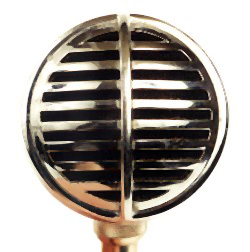Soul Limbo – Split Rivitt (Part 2)
We respectfully dedicate these pages to the friends and family of Barney Jeffrey 1958-2008
Limbering up
:format(jpeg):mode_rgb():quality(40)/discogs-images/R-5368930-1391676180-6187.jpeg.jpg) In 1968, the soul label Stax broke away from its parent Atlantic. The first album to be released on the independent Stax label was Soul Limbo, featuring the instrumental of the same name, by“Unofficially the MGs were named after the band leader’s car”Booker T. & The MGs. The band’s leader was Booker T.Jones (Hammond Organ). Officially The MGs was short for The Memphis Group, comprising Steve Cropper (guitar), Donald ‘Duck’ Dunn (bass) and Al Jackson Jnr (drums). Unofficially the MGs were named after the band leader’s car. Booker T. himself has corroborated this piece of trivia. His earlier outfit was called the Triumphs. Clearly he had a penchant for British roadsters.
In 1968, the soul label Stax broke away from its parent Atlantic. The first album to be released on the independent Stax label was Soul Limbo, featuring the instrumental of the same name, by“Unofficially the MGs were named after the band leader’s car”Booker T. & The MGs. The band’s leader was Booker T.Jones (Hammond Organ). Officially The MGs was short for The Memphis Group, comprising Steve Cropper (guitar), Donald ‘Duck’ Dunn (bass) and Al Jackson Jnr (drums). Unofficially the MGs were named after the band leader’s car. Booker T. himself has corroborated this piece of trivia. His earlier outfit was called the Triumphs. Clearly he had a penchant for British roadsters.
Collectively of course, Booker T. & The MGs backed all the soul greats including Wilson Pickett, Eddie Floyd and Sam & Dave. Indeed their names are often credited as the co-songwriters. In the 1960s, two white musicians working deep inside the heart of a black music phenomenon was unusual. Cropper and Dunn later formed the nucleus of the Blues Brothers Band.



 Elwood’s Note: “I’m pretty ignorant when it comes to harmonica mics. When you ask me what my favourite element is, I normally choose between earth, wind, water and fire. I thought “Impedance” was a stigmatised medical condition which affects 50 percent of all men. That’s why we asked Greg Heumann at
Elwood’s Note: “I’m pretty ignorant when it comes to harmonica mics. When you ask me what my favourite element is, I normally choose between earth, wind, water and fire. I thought “Impedance” was a stigmatised medical condition which affects 50 percent of all men. That’s why we asked Greg Heumann at 